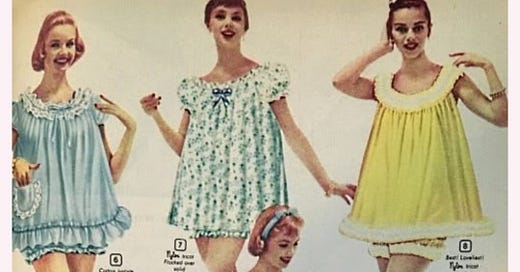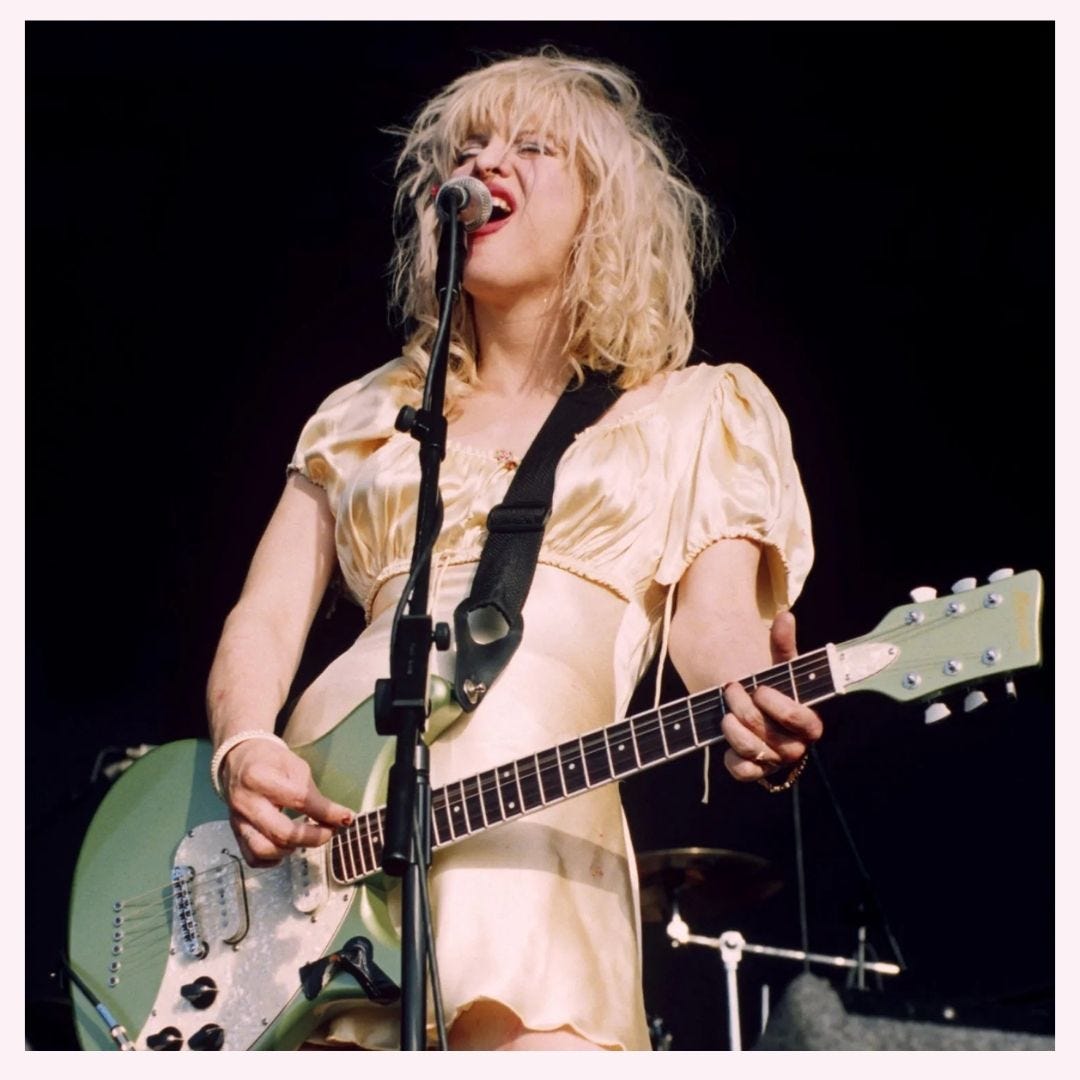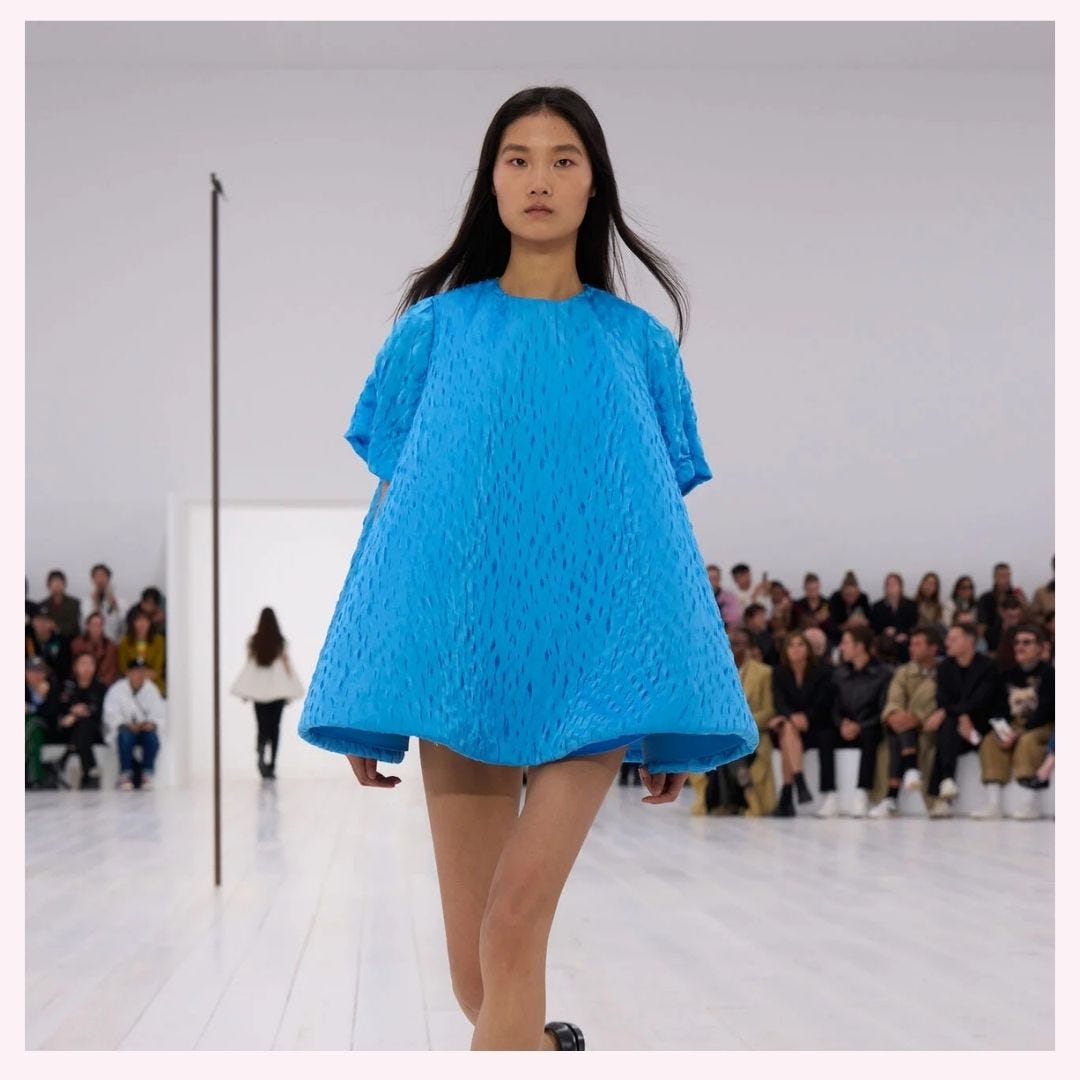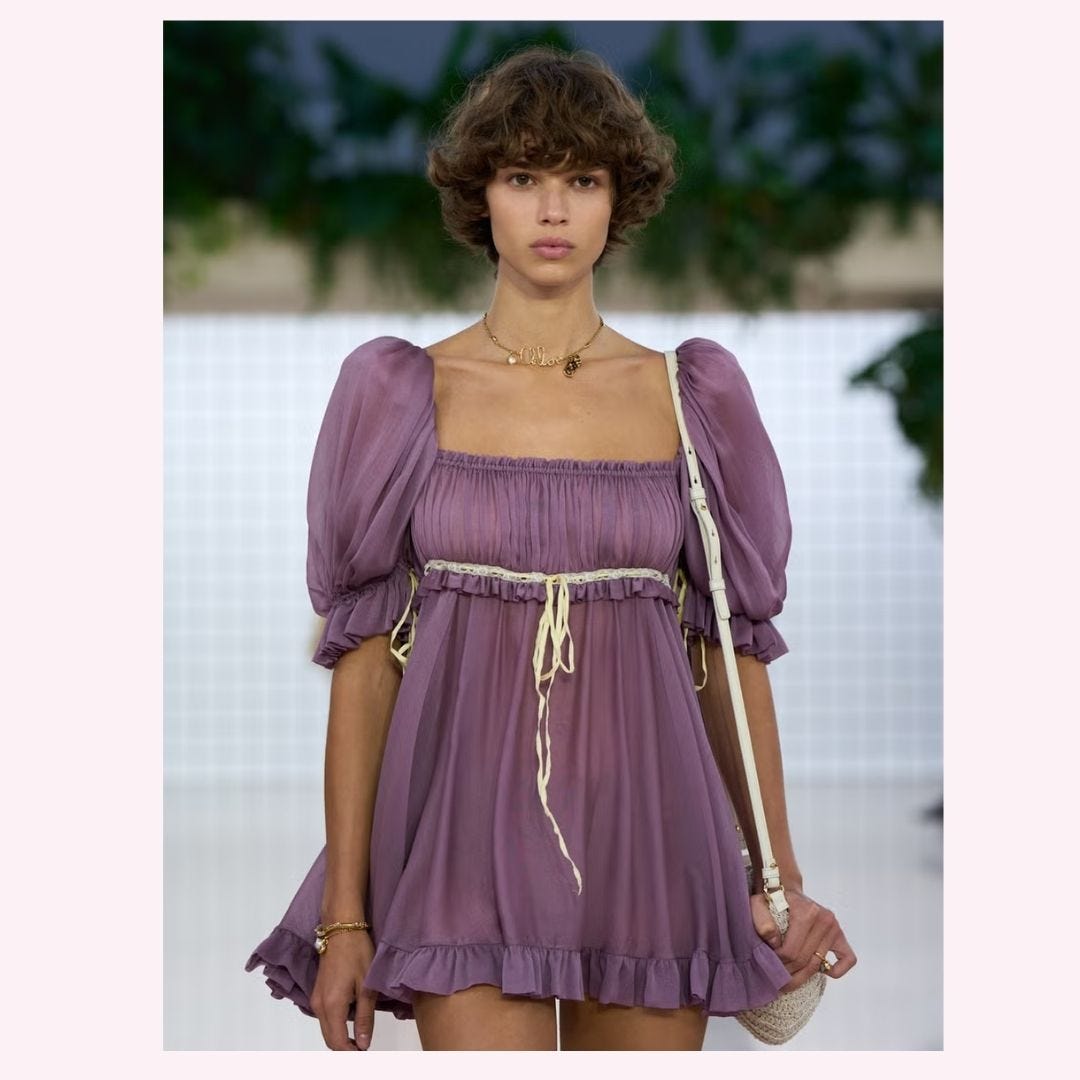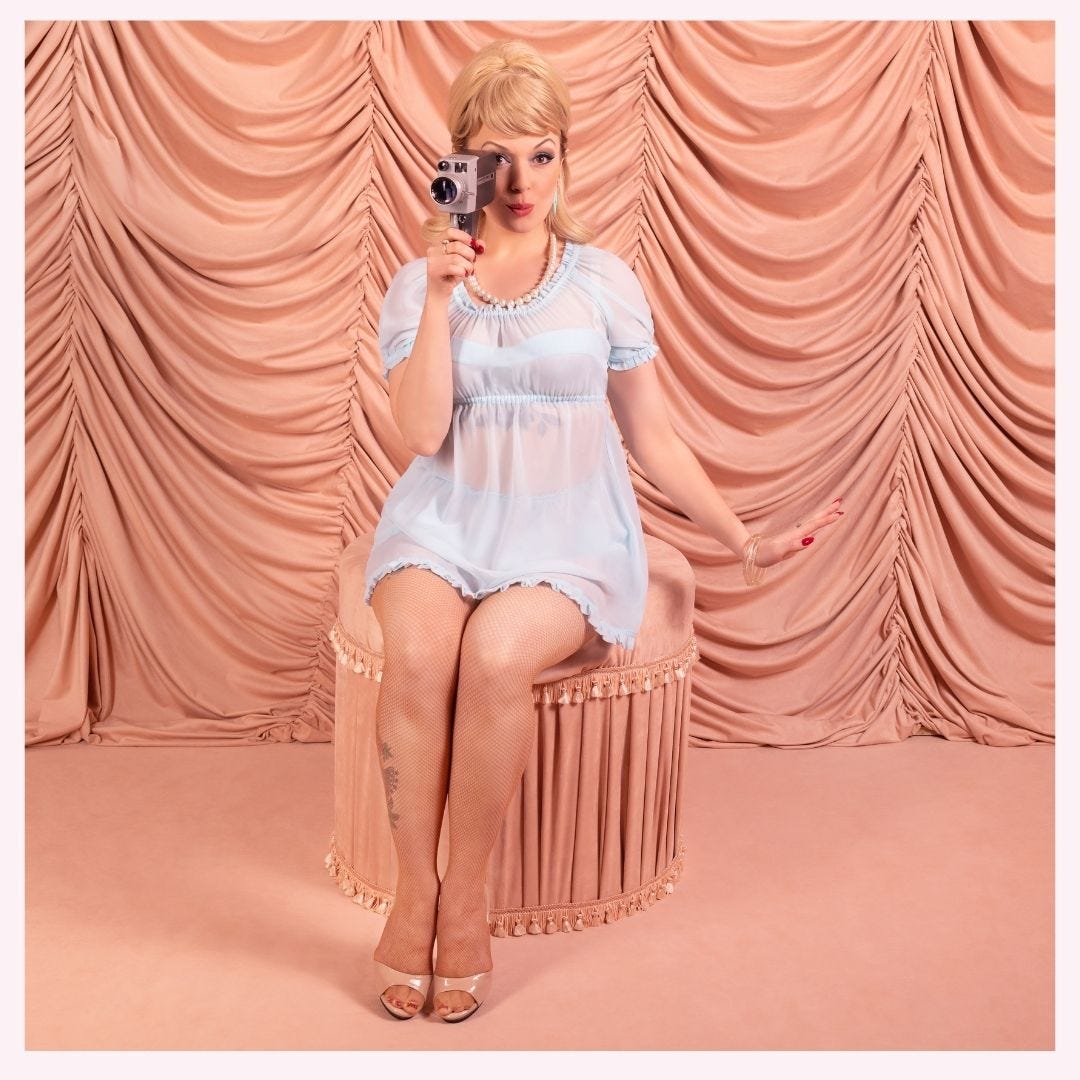🎀 My Babydoll Moment: Why I Finally Designed One (and Love It)
From 1940s nightwear to 2025 runway revival, discover how the babydoll—or baby doll—became one of fashion’s most enduring and iconic silhouettes.
It’s surprising, even to me, that after nearly 25 years of running What Katie Did, I’ve only just designed my first babydoll. Considering how iconic the style is in vintage lingerie history—not to mention its ever-circling return to fashion—I suppose I always had a bit of a mental block.
Let me explain.
Back in the early ‘90s, before What Katie Did even existed, I worked at fetish boutique Skin Two. Fridays were a ritual: my friend and SK2 colleague Fran and I would trawl the vintage stalls of Portobello Road, hunting down treasures before heading to work. It was Fran who introduced me to wearing open-bottom girdles as skirts and longline bras as outerwear—subversive, stylish, and way ahead of the curve.
One day, standing in the shop, she looked at a babydoll and said:
“I just don’t get these. They finish at the widest part of your hips and come with baggy knickers—probably the least flattering thing you could wear.”
And that opinion lodged itself in my brain. Deeply.
So when Poppy and Belle from the WKD team asked me to design a babydoll, I hesitated. But something about the idea wouldn’t let go. Maybe it was the challenge. Maybe it was the timing—babydolls are having a huge fashion moment in 2025. Or maybe it was the undeniable fact that, love them or loathe them, babydolls have an incredible cultural history.
A Brief History of the Babydoll
The story begins, somewhat unexpectedly, in wartime. In 1942, American lingerie designer Sylvia Pedlar created the first short nightgowns in response to World War II fabric shortages. She hated the term “babydoll” and never used it—but the silhouette stuck.
The name came a bit later, in 1956, with the release of Elia Kazan’s scandalous film Baby Doll, based on a screenplay by Tennessee Williams. The movie starred Carroll Baker as a pouty nineteen-year-old virgin, sleeping in a crib and teasing her husband in a ruffled nightie—yes, really. The film was controversial (and yes, it definitely gives off Lolita vibes today), but it cemented the name and the look.
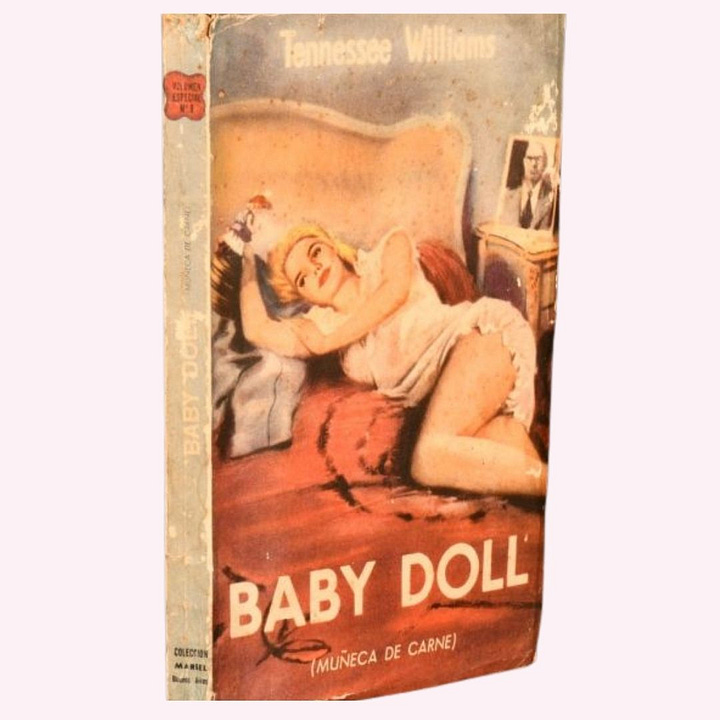
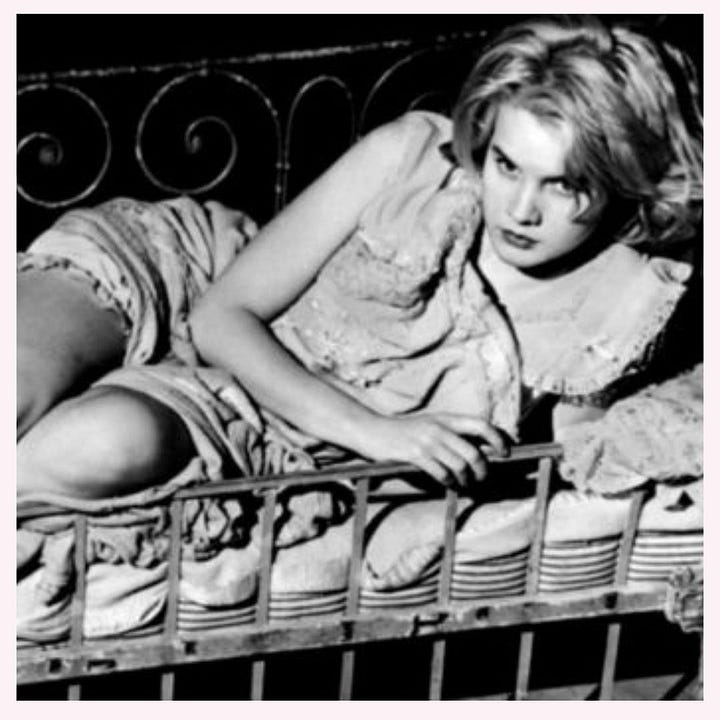
By the late 1950s, the babydoll had moved beyond the bedroom. Cristóbal Balenciaga transformed the silhouette into haute couture with his “Baby Doll Dresses”—structured, trapeze-line creations that blurred the waistline entirely. Hubert de Givenchy (he and Balenciaga were close) followed suit, celebrating freedom of movement and the end of corsetry: “My dresses are real dresses, ultra-light… garments that float on a body delivered from bondage.”
The 1960s saw the babydoll go fully mainstream. Models like Twiggy and actresses like Brigitte Bardot wore them as mini-dresses, while teens on London’s King’s Road shortened hemlines to extremes. Babydolls became a symbol of rebellion and youth culture.
A Garment of Contradictions
So why does the babydoll endure?
Because it’s a garment of contradictions. It’s revealing, yet modest. Feminine, yet subversive. Nostalgic, yet continually reinvented.
In the 1990s, it returned via the grunge scene and Riot Grrrl movement, thanks to Courtney Love (Hole) and Kat Bjelland (Babes in Toyland), who made the babydoll the centerpiece of their “kinderwhore” aesthetic. Worn with ripped tights and smeared eyeliner, their pastel frocks became a weaponised version of innocence—parodying the infantilisation of women while screaming punk rock on stage.
Designers like Meadham Kirchhoff and Miu Miu would later echo that contradiction, reimagining the babydoll in pastels with a dark undercurrent. Miuccia Prada even described her 2015 collection as a reaction to political conservatism: “There’s conservatism on both the right and left… People look for escapes from it, attracted to strange beliefs or underground clubs and music.” In other words, the babydoll wasn’t just a look—it was a statement.
The Babydoll Comeback: SS25 and Beyond
Which brings us to now.
For Spring/Summer 2025, the babydoll is everywhere. Designers like Loewe, Chloé, Cecilie Bahnsen, Alberta Ferretti, and Emilia Wickstead have sent dreamy, ruffled versions down the runway—each with their own twist. Think sheer organza, oversized appliqués, structured volume, and floaty chiffon, all reinventing the babydoll for a new generation.
It’s not just about nostalgia. These styles reflect a bigger shift happening in fashion—what some are calling "soft maximalism". After years of sleek minimalism and neutral basics, fashion is once again embracing femininity, emotion, and tactile joy. Babydolls—with their childlike whimsy and grown-up sensuality—fit perfectly into that moment.
On the street, style influencers are pairing them with ballet flats, Mary Janes, and even chunky trainers. The babydoll is being worn over long-sleeve tees, under oversized coats, or styled alone in full statement mode.
Once again, it's not just a nightie. It's a look.
Babydoll by the Numbers
1942: Sylvia Pedlar creates the first short nightgowns due to wartime rationing.
1956: Carroll Baker stars in Baby Doll, giving the garment its infamous name.
1958: Balenciaga brings the babydoll to couture with lace-tiered, waistless dresses.
1990s: The babydoll resurfaces as grunge uniform via Courtney Love’s "kinderwhore" look.
2025: The babydoll reclaims the runway, featured by at least five major fashion houses.
Designing My Babydoll
All of which brings me to the Priscilla Babydoll—the second babydoll I’ve ever designed for What Katie Did. Named after Priscilla Presley and designed with a soft early '60s influence, it’s sweet, sheer, and surprisingly flattering.
Made from powder blue georgette, it features delicate ruffles on the neckline, sleeves, and hem. There’s gentle shaping under the bust thanks to elastic, and crucially—crucially!—it finishes just below your bum, not at mid-hip. (Fran—I listened!)
We’ve styled it with matching bloomers or 1960s-style knickers, and it works equally well as nightwear or a cheeky little summer dress layered with a bra.
It doesn’t just look cute in pictures (and wow, I love how the images turned out)—it feels like the right blend of vintage charm and wearable modernity. Ethically made in our main factory in India, it fits right in with the rest of the What Katie Did range: thoughtful, flattering, and timeless.
Why Now?
So why now? Why did I finally say yes to the babydoll?
Because, like fashion itself, I’ve grown. I understand now that style isn’t always about flattering the body in obvious ways—it’s about how something makes you feel. The babydoll is light, it’s freeing, and it holds history in every swish of its skirt. It’s sweet, yes—but also rebellious, nostalgic, and even a little defiant.
I hope our Priscilla Babydoll makes you feel that way too. Whether you wear it as lingerie, sleepwear, or as a bold summer look with ballet flats and a bright red lip, it’s yours to define.
🖼 You’ll spot some original vintage babydoll ads and stills from the 1956 Baby Doll film woven through this post, alongside the images from our Priscilla shoot. It felt important to show how the style has evolved—how something once scandalous and boundary-pushing is now a nostalgic classic, reimagined with care.
And I’d love to hear from you: what’s your babydoll story? Do you adore them? Avoid them? Have a vintage gem tucked away or a fond memory of your first? Drop a comment—let’s get sentimental.
Links:
The Met Museum - Sylvia Pedlar
IMBD - Babydoll film (1956)
V&A Museum (London) - Cristobel Balenciaga Babydoll dress (1958)
Loevve Making of their Baby Doll dress (2025)
What Katie Did Priscilla (arriving June 2025)
Katie Thomas is the founder of What Katie Did, a vintage-inspired lingerie and fashion brand that brings mid-century glamour to modern wardrobes. When not designing new collections, she can be found hunting for vintage treasures across Somerset and beyond.
Curious to explore more vintage-inspired treasures? Our lovingly crafted lingerie and fashion collections at What Katie Did bring the elegance of yesteryear into your modern wardrobe, from perfectly structured corsets to the most delicate of intimates. Each piece tells its own story of timeless glamour.


